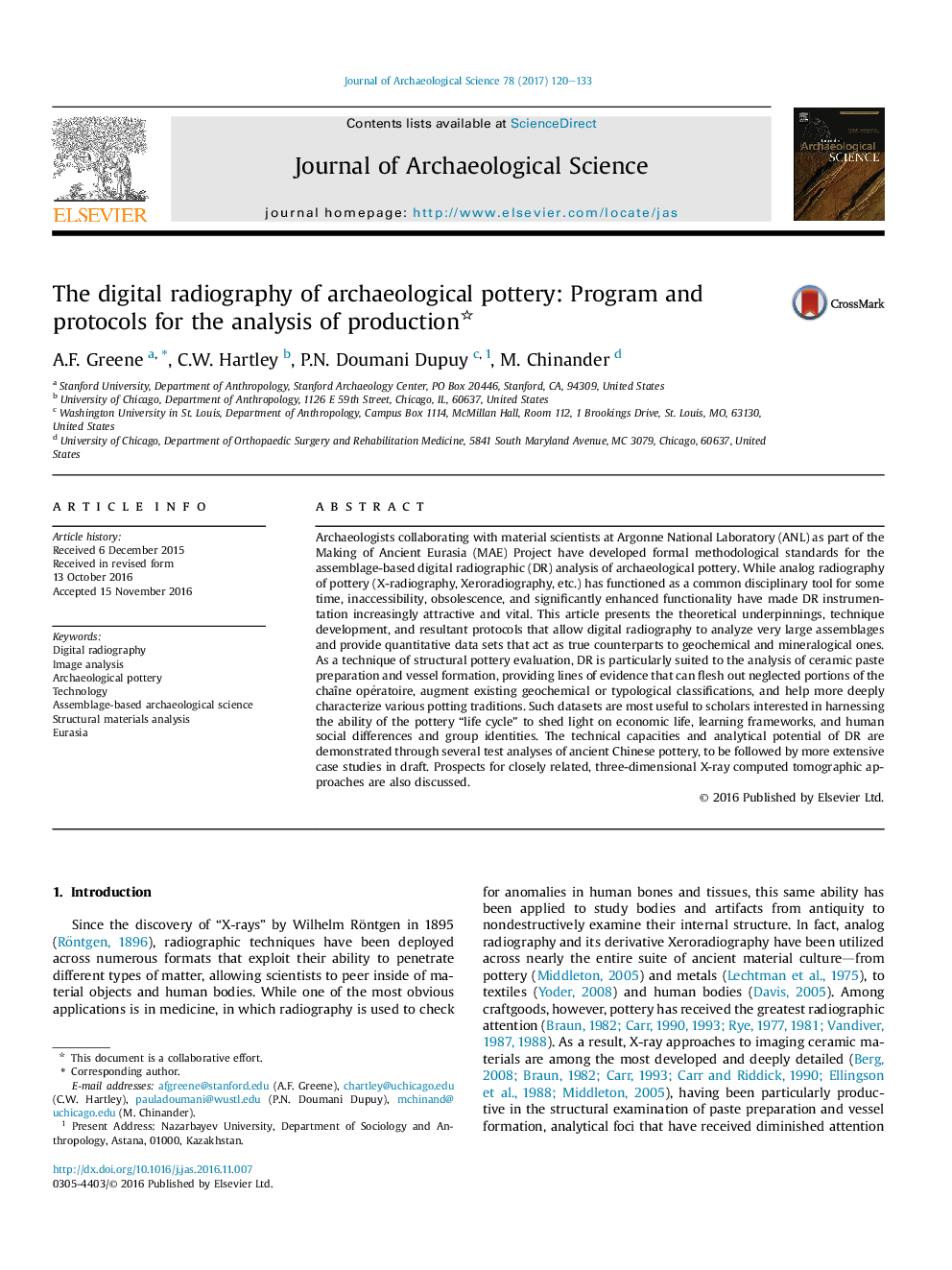| Article ID | Journal | Published Year | Pages | File Type |
|---|---|---|---|---|
| 5112136 | Journal of Archaeological Science | 2017 | 14 Pages |
Abstract
Archaeologists collaborating with material scientists at Argonne National Laboratory (ANL) as part of the Making of Ancient Eurasia (MAE) Project have developed formal methodological standards for the assemblage-based digital radiographic (DR) analysis of archaeological pottery. While analog radiography of pottery (X-radiography, Xeroradiography, etc.) has functioned as a common disciplinary tool for some time, inaccessibility, obsolescence, and significantly enhanced functionality have made DR instrumentation increasingly attractive and vital. This article presents the theoretical underpinnings, technique development, and resultant protocols that allow digital radiography to analyze very large assemblages and provide quantitative data sets that act as true counterparts to geochemical and mineralogical ones. As a technique of structural pottery evaluation, DR is particularly suited to the analysis of ceramic paste preparation and vessel formation, providing lines of evidence that can flesh out neglected portions of the chaîne opératoire, augment existing geochemical or typological classifications, and help more deeply characterize various potting traditions. Such datasets are most useful to scholars interested in harnessing the ability of the pottery “life cycle” to shed light on economic life, learning frameworks, and human social differences and group identities. The technical capacities and analytical potential of DR are demonstrated through several test analyses of ancient Chinese pottery, to be followed by more extensive case studies in draft. Prospects for closely related, three-dimensional X-ray computed tomographic approaches are also discussed.
Related Topics
Physical Sciences and Engineering
Materials Science
Materials Science (General)
Authors
A.F. Greene, C.W. Hartley, P.N. Doumani Dupuy, M. Chinander,
